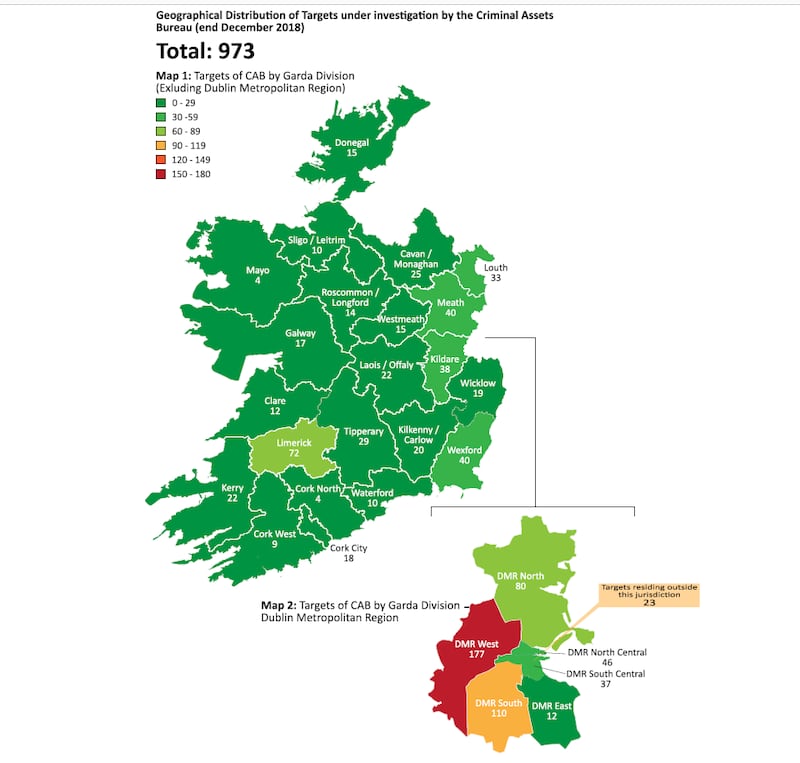The Criminal Assets Bureau (Cab) is targeting more criminals in west and south Dublin than anywhere else in the State.
The bureau opened more cases last year (30) than at any time in its 23-year history and additional staff are now being sought for the Chief State Solicitor's Office in an effort to keep up with the higher workload.
The Cab has also established Facebook and Twitter accounts and is the only section of the Garda now inviting social media tip-offs and intelligence from the public about suspected criminals with lavish lifestyles.
The bureau, which freezes and then confiscates any asset derived from crime, on Tuesday published its annual report for last year.
Det Chief Supt Pat Clavin, who leads the bureau, said a wide variety of crime was being examined by his staff, but the drugs trade remained the predominant criminal activity targeted.
Since the law has been changed to allow the Cab to pursue assets valued at €5,000, rather than the previous minimum value of €13,000, even relatively minor criminals are now being investigated.

“This is having an impact through early intervention with mid-level criminals in the expectation of inhibiting their progression,” Det Chief Sup Clavin said.
Many high-value vehicles owned by criminals had been confiscated and this was leading some gang members to opt for lower-value vehicles in an attempt to avoid drawing attention to themselves.
Dublin area
Of the total of 973 target criminals now under investigation by the bureau, some 177 are based in Garda’s Dublin metropolitan region (DMR) west; the highest of any of the Garda’s 28 divisions across the State.
The DMR south division – the southern part of Dublin outside the inner city – is next with 110 targets, followed by DMR north, where 80 targets are based. The Limerick Garda division is next, with 72 cases, followed by the remaining smaller division of Dublin.
DMR north central and DMR south central – both inner city divisions – are home to 46 and 37 Cab targets, followed by DMR east with 12 targets.
A number of counties which Dublin criminals have moved to also feature significantly in the Cab's inquiries. In Wexford, for example, there are 40 Cab targets, with another 40 in Meath and 38 in Kildare.
Criminals in every Garda division in the country are being targeted, but it is Co Mayo that has the lowest number – four.
The bureau returned €5.6 million to the exchequer last year, while cash to the value of €5.8 million, US$600,000 and £75,000 is currently frozen by the Cab as a result of ongoing money laundering investigations.
Assets valued at €8.4 million were frozen on suspicion that they represent the proceeds of crime, including €6 million cash and bank accounts, €2.1 million in property and €113,000 in jewellery.
In 114 cases the High Court determined last year that assets valued at €6.2 million being investigated by the Cab were the proceeds of crime, compared with 51 cases a year earlier.
The Cab has pursued properties even if they were in negative equity as it wants to disrupt criminals and ensure they do not have the benefit of an asset bought through crime. Some 99 new assets profilers have been trained this year bringing to 378 the number of profilers now reviewing the lifestyles of potential targets.















